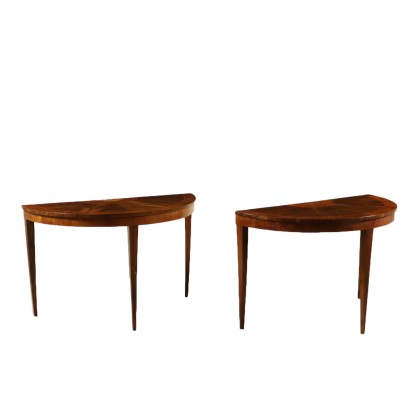Pair of Consoles Walnut Italy Mid 19th Century
Features
Style: Charles X (1824-1830)
Age: 19th Century / 1801 - 1900
Origin: Italy
Main essence: Walnut
Description
A pair of half moon consoles, walnut. They can be assembled. Pyramidal legs, walnut veneered top with inlaid reserve in the middle. Restored. Manufactured in Italy, mid 19th century.
Product Condition:
Good condition. Wear consistent with age and use. Any damage or loss is displayed as completely as possible in the pictures.
Dimensions (cm):
Height: 81
Width: 126
Depth: 62
Maximum size (cm):
Diameter: 124
Additional Information
Style: Charles X (1824-1830)
Referring to a very short period, the Charles X style denomination is nonetheless significant because it allows us to detect some specific elements of the taste of the time.nIt can be considered the last phase of the stylistic research of the Restoration, in which bourgeois requests and needs are welcomed, and opens up to a taste for the Gothic.
nCharacterized by wavy and wavy lines, which oppose the more squared ones of the Empire, it mainly uses light woods with darker threads and very few metal applications.























